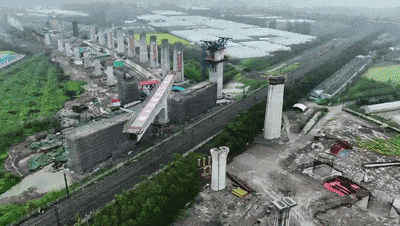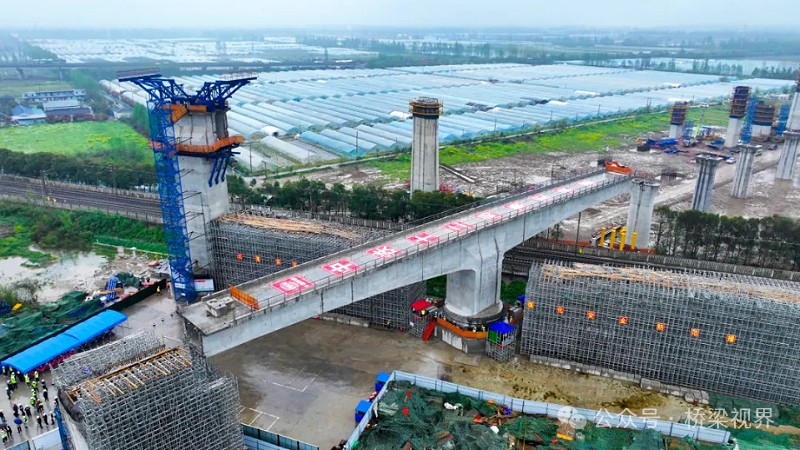On April 2nd, the super large bridge crossing the Han-Dan Railway on the Hankou to Hanchuan East section of the Wuyi section took 40 minutes to rotate 63 degrees counterclockwise in the air, achieving a “magnificent turn”. It is the first bridge on the entire Hankou to Hanchuan East line of the Shanghai-Chengdu-Chongqing High-Speed Rail to complete the rotation, thoroughly unblocking the erection channel of the southwest downlink, laying a solid foundation for the entire line to be completed and open for operation on schedule.

The Hankou to Hanchuan East section of the Shanghai-Chengdu-Chongqing High-Speed Rail is an important part of China’s Yangtze River high-speed rail corridor, with a total length of about 44.5 km. It includes about 23.1 km of bridges, about 1.4 km of subgrade, and utilizes about 19.8 km of the existing Hanyi Line, including many rotating bridges, cable-stayed bridges and other special structures. Among them, the super large bridge crossing the Han-Dan Railway on the southwest downlink is a “T-shaped” rotating structure, 113.5 meters long, 7.1 meters wide, and weighing more than 6,000 tons, which is one of the key and difficult control projects of the entire line.

Under the circumstances of starting construction later than other sections, the project team had to ensure the high-speed rail line opened on the same schedule, making the construction period the “top difficulty” limiting the line construction. To effectively shorten the construction period and achieve high-quality performance, the project team optimized the original design of cantilever pouring to segment support cast-in-place construction through site surveys, multi-party discussions, and expert demonstrations, effectively saving nearly 3 months of construction time. They continuously optimized the construction organization design, fully equipped with personnel, materials, machinery, formwork and other elements to enable large-scale flow operation and balanced construction. A comprehensive performance incentive system was implemented to further quantify responsibilities and clarify goals, directly linking the project progress with performance. While ensuring the safety of adjacent construction, they maintained a high-intensity work pace, meeting the rotation requirements in just 7 short months.

The Hankou to Hanchuan East section of the Shanghai-Chengdu-Chongqing High-Speed Rail, as an important part of China’s “eight vertical and eight horizontal” high-speed rail network along the Yangtze River, is of great significance for accelerating the construction of the Yangtze River high-speed rail corridor, optimizing the intercity rail network of the Wuhan metropolitan area, and supporting Wuhan in building a national central city and Hubei Province’s “one main, two secondary, three groups coordinated” development after its completion and opening.
